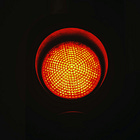Should You Really Be Trading Less? The Truth About “Less is More”
The Thursday Trader's Tip edition offers to-the-point trading performance advice that can be read under 5 minutes.
You’re reading the free edition of The High-Performing Trader. Upgrade to Paid for exclusive coaching insights and tools.
In a recent coaching session, a client confessed:
Sara, I hear all the time that less is more, that traders should trade less. But there’s a conflict inside my mind with that: mathematically, the more trades you take, the more money you’ll make. Isn’t that true? The more trades you take, the more chances you have to materialize your edge. So why are traders so busy with trading less?
I stopped for a moment to think.
The trending advice is always less is more, simplicity is key. But this client had a point.
Let’s break down this conflict.
What Most Traders Get Wrong About "Less is More"

Most traders take the “less is more” advice at face value and set arbitrary limits on the number of trades they take.
They restrict themselves to one or two trades per session, believing that fewer trades lead to better results. They assume that stopping after a win or a loss is the key to consistency.
But is it “less is more” really about quantity or quality of execution?
The Real Struggle
The problem isn’t the number of trades—it’s the quality of perception while trading.
The real challenge is maintaining an unbiased view of the market for as long as your session goes.
Every trade’s outcome—whether a win or loss—has the potential to distort perception. An inexperienced trader might need just one bad trade to lose objectivity, while a great trader can maintain clarity for much longer.
I attempted to draw a chart for perception clarity decline over trades. If perception were an easy measure to track, I suspect we’d see something like this:
The reason traders impose limits is purely psychological. Because from a mathematical standpoint, it just makes sense to keep on taking trades isolatedly.
In essence, traders try to protect themselves from their own biases, convinced they’re protecting their trading accounts.
Upgrade to Paid for practical self-coaching tools and a deeper level of awareness to transform your trading mindset.
What To Do Then?
Instead of focusing on limiting a number of trades, shift your focus to how long you can sustain high-quality decision-making.
If your session is still open and you have the mental clarity to take valid trades, why stop yourself?
The point of trading is training your ability to maintain an undistorted perception. This means:
Take all valid trades that fit your edge.
Self-regulate your mental capacity. The goal is not to avoid mistakes by stopping early but to develop the ability to keep executing well, even after wins or losses. You might take a small break in between trades, but that doesn’t mean you need to end the session.
Don’t imitate rules that don’t fit your trading style. The “less is more” advice is about quality, not quantity.
Your Next Move
Next time you’re in a trading session, don’t let an arbitrary limit stop you. Ask yourself:
Do I still have the mental capacity to execute trades with clear perception?
If yes, keep trading—as long as the setups fit your edge.
If no, stop—not because you reached a trade limit, but because your clarity is fading.
Your job isn’t to trade less. It’s to train your ability to stay sharp for longer.
Peaceful trading,
Sara
P.S. Want to stop fear-based rules from capping your trading potential? Learn how to replace them with confidence-driven rules in this post.
What Paid Subs Are Saying
Related Reads:









I agree. The limitations traders put on themselves is for psychological reasons. You only have so much mental capital to expend day to day. Also the stats behind the highest performing traders don’t lie.
https://open.substack.com/pub/therealtraderdan/p/top-retail-trader-performance-stats?r=3q54hm&utm_medium=ios